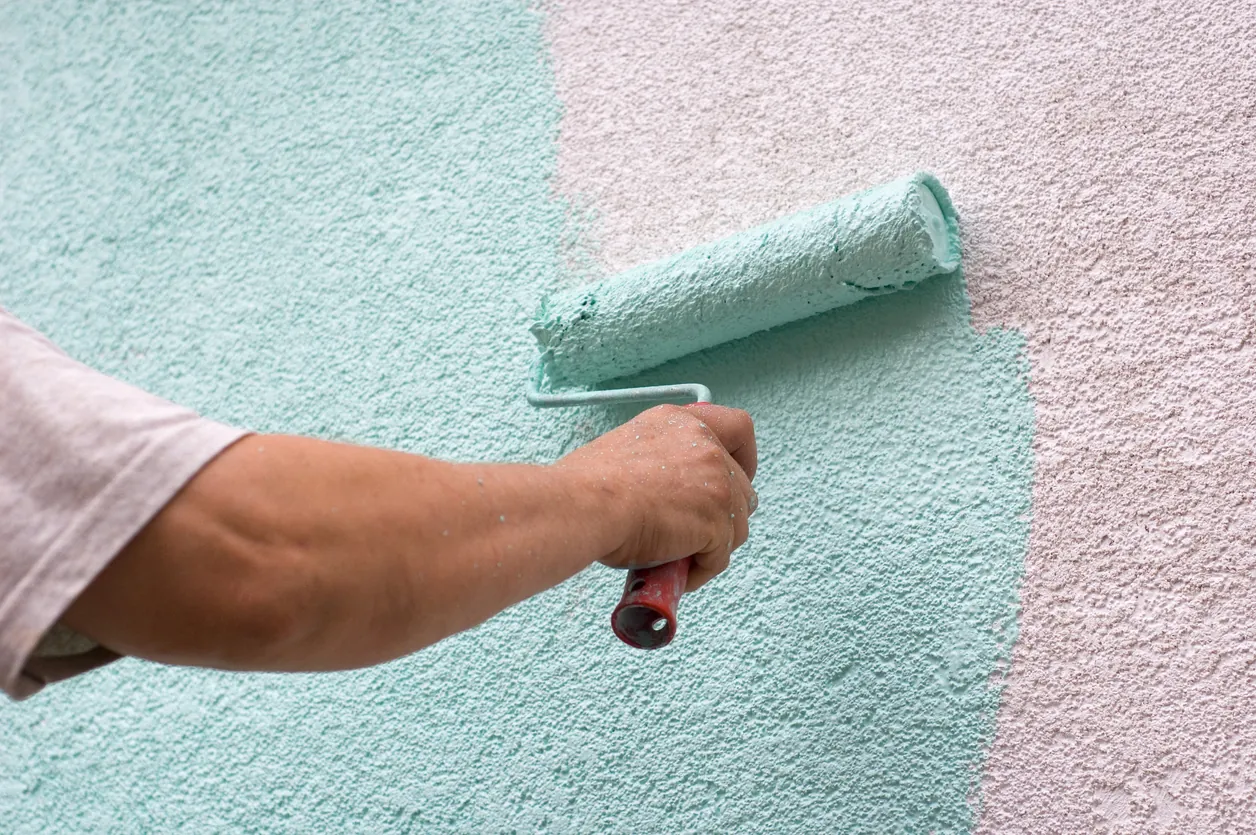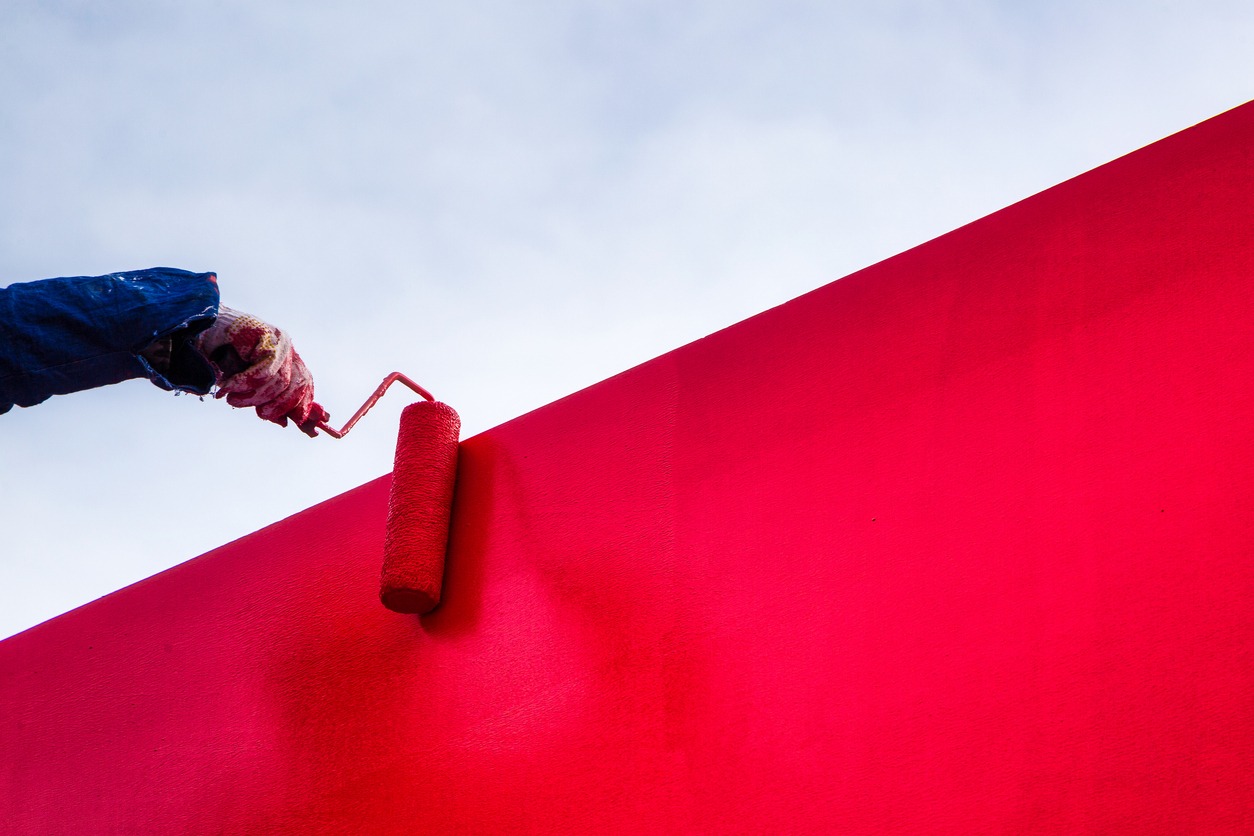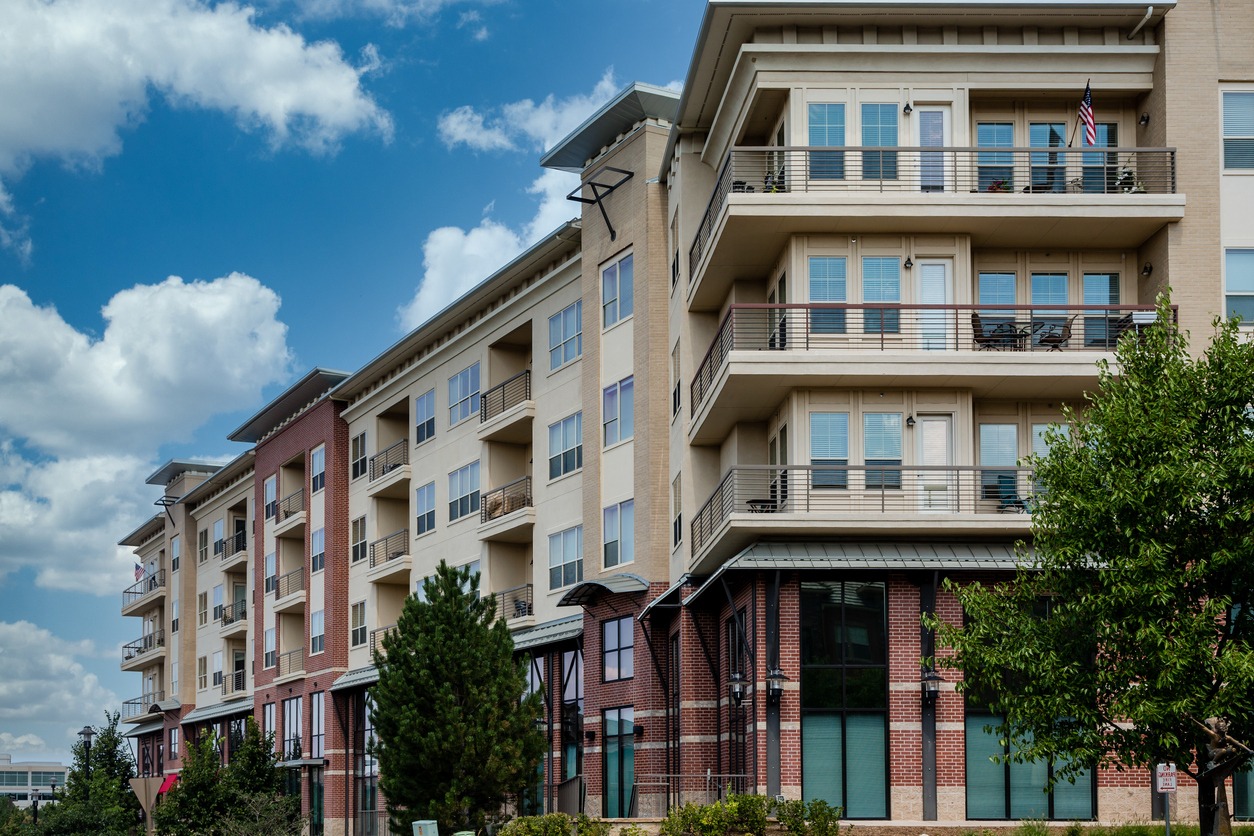It is essential to maintain a pristine appearance in commercial spaces as it influences client perceptions. Stucco is a popular choice for building exteriors because of its durability and aesthetic appeal. However, it can degrade over time due to weather, wear, and other environmental factors. This may lead to a less-than-ideal appearance and possible structural issues.
Recognizing the signs of wear and taking timely action to repair and refresh stucco surfaces is essential. Let us discuss how businesses can benefit from professional stucco repair and painting services to refresh their commercial spaces, boost their curb appeal, and ensure their exteriors reflect the quality and professionalism of their operations.
Signs Your Stucco Needs Attention
Maintaining the stucco on your commercial building is important to keep your property looking professional. Here are some key signs that your stucco exterior requires attention:
Visible Damage
The presence of visible damage is the most common sign. Cracks can range from hairline fractures to noticeable gaps. These are often the result of building settling or seismic activity. Holes may develop from impacts or due to the deterioration of underlying materials. Water damage is particularly concerning as it can lead to further structural issues if not addressed. Signs of moisture penetration include staining or mold growth on the stucco surface, indicating that water is seeping through and potentially damaging the wall’s structural integrity.
Aging and Wear
Stucco ages naturally and undergoes wear. That is why regular inspections and maintenance are important. Look out for signs of deterioration, such as loosening of the texture. This may lead to pieces of the stucco falling off. There might also be bubbling or blistering under the surface caused by prolonged exposure to the elements. Regular checks help spot these issues early and prevent extensive damage and costly repairs.
Color Fading
The color of the stucco fades when exposed to sunlight and other environmental conditions for long periods. Its color can become dull and uneven, which affects the aesthetic appeal of your property. Harsh weather conditions, including rain, snow, and even pollution, can also further accelerate the fading process and degrade the material’s surface.
Recognizing these signs and addressing them through professional repair and painting fortifies the building’s exterior against future damage.
Benefits of Professional Stucco Repair
Professional stucco repair services are also important in safeguarding the structural integrity of your property. Investing in professional repairs can provide several advantages that are crucial for maintaining a property’s value and functionality.
- Enhanced Durability: Professional stucco repair addresses any cracks, holes, or other damages that can lead to major structural problems if left untreated. This includes applying the right techniques and materials that ensure the stucco’s resistance to weather and environmental stressors, thereby extending its lifespan.
- Improved Aesthetic Appeal: A fresh, damage-free stucco surface can transform the look of your commercial property. This can make it appear more inviting and professionally maintained. This is vital for businesses where first impressions matter, enhancing the appeal to clients, customers, and potential tenants.
- Prevention of Further Damage: By addressing issues early, professional stucco repair helps prevent minor problems from escalating into more significant, costly repairs. This includes sealing cracks and holes that allow water to penetrate and cause internal damage to the building structure.
- Increased Property Value: Well-maintained buildings have higher market value and rental rates. Professional stucco repair is a critical part of maintaining the building’s facade, which directly contributes to its overall valuation.
- Energy Efficiency: Stucco repair can also help seal leaks and drafts in the building envelope. This helps enhance the thermal efficiency of the property. This can lead to reduced heating and cooling costs, helping you save money and improving the comfort of those inside the building.
- Compliance and Safety: Regular maintenance and repair of stucco can also ensure compliance with local building codes and safety standards. This reduces the risk of liabilities associated with property damage or injuries caused by deteriorating exteriors.
Choosing professional stucco repair services is a wise investment to preserve the structural and aesthetic quality of your property. You can also ensure that it remains a safe and appealing space for the building’s occupants.
The Stucco Repair Process
Understanding the steps involved in stucco repair can help property owners appreciate the value of professional service and ensure that the work is carried out to high standards.
- Assessment and Evaluation: This includes identifying all areas that require repair, such as cracks, holes, and water damage. Professionals will also evaluate the potential causes of damage, such as structural issues or environmental factors, to address not only the symptoms but also the underlying problems.
- Surface Preparation: Before any repair work can begin, the damaged area must be prepared to ensure that the new stucco adheres properly. This typically involves cleaning the area of any loose material, dirt, and debris. Old, damaged stucco might need to be removed. Any cracks will be widened slightly to allow for better adhesion of the repair material.
- Application of Stucco Patch: Once the surface is prepared, a stucco patch mixture is applied. The composition of the patch will depend on the type of stucco originally used and the extent of the damage. For minor cracks, a pre-mixed stucco repair compound may be sufficient. For larger areas, a custom-mixed stucco may be necessary to ensure a consistent finish with the rest of the surface.
- Texturing: Matching the texture of the existing stucco is important for a seamless repair. Once the patch is applied, it is textured to match the surrounding areas. Depending on the original finish, this might involve using tools or techniques to mimic patterns such as stippling, sweeping, or dabbing.
- Curing and Drying: Stucco needs time to cure and dry properly. This stage is essential as it ensures the durability and strength of the repair. The time required can vary depending on weather conditions and the type of stucco used, but typically, it takes several days.
- Painting and Finishing: After the stucco has fully cured, the final step is painting. This not only protects the repair but also ensures that the repaired section blends in with the existing structure. The entire area may sometimes be repainted to ensure a uniform appearance.
- Sealing and Waterproofing: In areas prone to moisture, a waterproof sealant may be applied over the repaired stucco to provide additional protection against water intrusion and weather elements.
Choosing the Right Paint for Stucco
Choosing the right paint for stucco is crucial for ensuring both the durability of the finish and the protection of the underlying material. Here are key considerations and steps for selecting the appropriate paint for stucco surfaces:
- Acrylic Latex Paint: The best type of paint for stucco is generally 100% acrylic latex. This paint provides excellent durability and flexibility, which is crucial for accommodating the expansion and contraction of stucco in various weather conditions. Acrylic latex paint also offers good color retention and resistance to mildew and fading.
- Breathability: It’s important to select a paint that allows stucco to “breathe.” Breathable paints enable moisture vapor to escape from the stucco, preventing water retention that can lead to mold growth and structural damage. High-quality acrylic latex paints typically have good permeability, which makes them ideal for stucco.
- Texture Compatibility: Stucco comes in various textures, from smooth to heavily textured. Choose a paint that complements the texture of your stucco without filling in or obscuring it. Some paints are formulated explicitly for rough surfaces and can provide a consistent finish without compromising the stucco’s natural appearance.
- Finish: The choice of finish will depend on the desired aesthetic and the level of exposure to the elements. For stucco, a flat or satin finish is often recommended because it minimizes the appearance of surface imperfections. Glossier finishes can highlight flaws and may not be as effective at adhering to textured surfaces.
- Color Selection: Lighter colors are generally better for stucco because they reflect sunlight and heat. This reduces the risk of heat-related damage and fading. Darker colors can absorb heat and may lead to faster aging of the stucco. When choosing a color, consider the climate and the amount of direct sunlight your building receives.
- Quality: Invest in high-quality paint. While it may be tempting to save money with cheaper options, higher-quality paints provide better coverage, longer-lasting protection, and more resistance to weather conditions. This can reduce the frequency of repaints needed over time.
- UV Protection: Look for paints that offer UV protection. UV-resistant paints help protect the stucco from the sun’s damaging rays, preserving the color and integrity of the surface.
- Professional Consultation: Consulting with a professional painter or a specialist in stucco finishes can provide additional guidance tailored to your specific situation, including local climate considerations and the existing condition of the stucco.
Choosing the right paint for stucco is important to ensure the long-term protection and maintenance of the building’s exterior. Properly selected and applied paint can significantly extend the life of stucco surfaces and enhance the overall value of the property.
The Painting Process
A professional paint job on stucco surfaces serves as a protective barrier against the elements. Ensuring that the painting process is done correctly can significantly impact the durability and finish of the job. Here are the steps involved in the painting process:
Surface Preparation
- Cleaning: The first step involves thoroughly cleaning the stucco to remove dirt, debris, and mold or mildew growth. This can be achieved through pressure washing or using a brush with a cleaning solution. It depends on the condition and sensitivity of the stucco.
- Repairing Damages: Before painting, any cracks, holes, or areas of damage should be repaired with a stucco patching compound. Properly sealing these imperfections helps prevent future damage and ensures a smooth finish.
- Priming: Applying a primer is crucial, especially if the stucco has never been painted or if there are significant repairs. Primer enhances paint adhesion and provides an even base that improves the overall appearance of the paint job.
- Masking: Windows, doors, and trim should be masked to protect them from paint splatters. This step ensures clean lines and a professional-looking finish.
Application
- Choosing Tools: Rollers with a thick nap are ideal for painting stucco, as they can handle the texture of the surface and provide even coverage. For deeper textures, a brush or a sprayer may be necessary to ensure the paint reaches crevices and undulations.
- Applying Paint: Apply the paint in a uniform, systematic manner, starting from the top and working downwards to prevent drips and streaks. It may be necessary to apply multiple coats to achieve consistent coverage, allowing sufficient drying time between coats, as the paint manufacturer recommends.
- Technique: Use a back-rolling technique after spraying to ensure the paint is embedded into the texture of the stucco and to avoid any unevenness.
Finishing Touches
- Checking for Missed Spots: After the initial application, inspect the surface for any missed spots or inconsistencies. Additional touch-ups may be necessary to cover these areas fully and ensure a uniform coat over the entire surface.
- Sealing Edges: Sealing around windows, doors, and other fixtures can prevent water ingress and give a sharp, clean finish to the job. This increases the longevity of the paint job.
- Clean-Up: Removing all masking tape while the paint is slightly tacky prevents peeling. Clean all tools and the area around the building to leave the site looking neat and professional.
The attention to detail in each phase of the painting process sets apart a professional paint job.
Hiring Professionals
Hiring professionals for any property maintenance or improvement project is an investment in quality and peace of mind. When it comes to stucco repair, painting, or other specialized work, professional expertise can make a significant difference in the longevity and appearance of the results. Here’s what to consider and expect when hiring professionals:
Assessing Qualifications and Experience
- Credentials: Look for licensed contractors who have the necessary credentials and insurance to perform the work. Licensing ensures that they meet specific industry standards and are knowledgeable about local building codes and regulations.
- Experience: Choose professionals with extensive experience in the specific task you need, such as stucco repair or exterior painting. Experienced contractors will be familiar with the best materials and techniques for durable and aesthetically pleasing results.
- References and Portfolio: Ask for references and a portfolio of previous projects. This can give you insight into their workmanship and the satisfaction of past clients.
Understanding the Benefits of Professional Expertise
- Quality Workmanship: Professionals bring a level of precision and skill that is hard to achieve through DIY efforts. They have the tools and knowledge to ensure the job is done correctly the first time.
- Time Efficiency: A professional team can complete the job faster than amateurs, minimizing disruptions to your daily routine or business operations.
- Warranty and Follow-Up Services: Many professional services come with warranties for the work performed, providing added investment assurance. They also offer follow-up services to address any issues that may arise after the completion of the project.
Establishing Clear Communication
- Detailed Quotes: Ensure you receive a detailed quote that outlines the scope of work, materials to be used, timelines, and costs. This helps prevent misunderstandings and hidden charges.
- Communication Channels: Discuss how you will communicate throughout the project. Regular updates can help ensure that the project meets your expectations and that any adjustments are made promptly.
Negotiating Contracts
- Contract Details: A professional contract should include every aspect of the project from start to finish, including payment schedules, detailed descriptions of the services to be provided, timelines, and procedures for handling additional work or changes to the scope.
- Dispute Resolution: Check the contract for clauses that outline dispute resolution procedures. Knowing how disputes are handled can save a lot of trouble and legal costs if disagreements arise.
Evaluating Professionalism and Reliability
- Punctuality and Presentation: Observing the punctuality of the professionals for meetings and how they present their business can indicate their reliability and attention to detail.
- Reviews and Ratings: Look up online reviews and ratings on independent platforms. This can provide unbiased insights into their reliability and customer service.
Hiring professionals for specialized tasks not only ensures that the work is done efficiently and correctly but also adds value to your property.
Conclusion
Taking the time to hire professionals for stucco repair and painting ensures that your commercial space is protected and maintained for the future. Expert care in these areas can significantly enhance the longevity and appearance of your property. For high-quality service and exceptional results, consider reaching out to Custom Painting, Inc. You can call us at 925-294-8062 or fill out our online form to get started on your project today.




